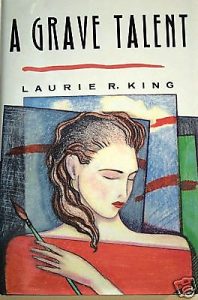Writing Kate
(Celebrating the 30th anniversary of A Grave Talent, here’s part of a 2017 post on Kate Martinelli.)
Grave Talent began with two ideas: What would Rembrandt look like if he were a woman? And, Can I write a novel in which the protagonist does nothing?
The question of women in what are generally assumed to be men’s roles was one I had been poking around for years, although for the most part in the world of theology rather than crime fiction—I wrote my Masters thesis on the feminine aspects of the God of the Old Testament, and as a graduate student had co-led a seminar in Women in the New Testament. First-century women rabbis, the influence Moses’ wife had on the future of Judaism, God as Mother: all topics I had explored. (To say nothing of the practical applications of The Feminine, since I also had small children at the time.)
So, the seed: Artists are possessed by their vision of the world and their need to give it expression. And the greater the artist, the more complete the possession—and, the more impossible they are as human beings: egomaniacal, manipulative, and willing to devour every scrap of energy in their vicinity…and mostly male.
Whether by nature or by upbringing, fewer women are so thoroughly possessed by this near-pathological self-importance. But if we did have a woman like this, and if she did possess the inborn talent that goes far to justifying the artist’s egomania, what would she look like, and how would it shape the world around her? Yes, the question is usually, Why have there been no great woman artists? In A Grave Talent we ask rather, If confronted by a truly great woman artist, how would the world react?
Vaun Adams is less a character in the book than she is a force of nature. Her raw and uncontrollable talent, her utter fixation on the canvas at hand and the resultant blindness to those around her, changes everything she comes near: Like a black hole, the intensity of her presence tugs everyone else out of their given orbits.
As such, Vaun is both the book’s central character and a character totally apart from the action. She—her talent—forms the central axis of the story, and all the other characters—neighbors, lovers, the police, the murderer—spin madly around the solidity of her presence. Yet she does act, at the very end: She abandons her aloofness, comes out of her extreme retreat, and plays a role.
And when she does, the shock of her motion throws those spinning around her to the four winds.
* * *
Excerpt, discussion guide, and order information are here.
